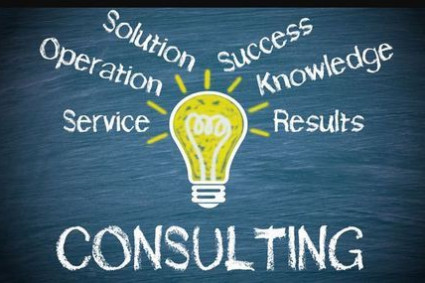You know that moment in a business meeting when someone says, "We'll launch in Q3," and everyone just nods?
Let's be honest: that usually means, "We haven't figured it out yet, but Q3 sounds safe."
Timelines in business plans tend to be pretty on paper—arrows, milestones, and color-coded phases on clean slides. But when the question arises: when are you actually going to do the work? That's when it all unravels, unless you've constructed a timeline that's reality-based.
Today,we're going to take you through how to construct a timeline for your business plan that your team can actually use and one that will wow investors as well.
If you want professional intervention in creating a business timeline, you can always connect with a business development strategist for the finest timeline planning that works for you.
What Is a Timeline in a Business Plan?
A timeline in your business plan is more than just a calendar with events. It's a roadmap that shows when and how you'll achieve your major goals. This includes things like:
Product launches
Marketing campaigns
Hiring plans
Sales targets
Fundraising rounds
A solid timeline connects all these activities and shows how they will unfold over time. It helps everyone, from your team to your investors, to understand your game plan.
Why Timeline Planning Is Important
Let's get down to it: why in the world should you waste your time creating timelines for your business milestones?
1. Adds Focus to Your Plans
"We want to release a product" is not a plan. When will it be done? Who is responsible? How much will it cost?
Timelines turn general intentions into actual plans:
"Product launch by October 2025. John heads development. Budget: $5000."
2. Compels Actual Structure
Milestones without dates are merely wishful thinking. As soon as you introduce dates, responsibilities, and budgets, you create structure. That's when you begin actual progress.
3. Keeps the Team Aligned
Everybody's aware of what's next, who's responsible for what, and when it's due. No more missed handoffs or "I thought you were doing that."
4. Builds Investor Confidence
Investors don't demand perfection, but they would like to know that you've given it some thought. A timeline indicates your plan isn't just talk; it's doable.
What Should Your Timeline Include?
Before you dive into a Gantt chart or a slide deck, let's get clear on what your business timeline should actually include. An intelligent business plan timeline extends beyond product timelines; it ties all departments together.
Provided below is a general breakdown of what a business timeline should include. However, for personalized timelines, you should consult a professional business development strategist.
1. Product and Operations Timeline
Show how your product or service comes to life. This includes stages like:
Finalizing product design
User testing
Version updates
Launch dates
Example:
Q2 2025 – Finalize design
Q3 2025 – Start beta testing
Q4 2025 – Launch version 1.0
Also include operational tasks like vendor onboarding, hiring, or setting up new locations.
2. Marketing and Customer Growth Timeline
This part shows how and when you'll attract and keep customers.
Example:
Q2 2025 – Roll out awareness campaign
Q3 2025 – Reach 5,000 users
Year 2 – Penetrate new market segment
This lets everyone know how momentum grows and when to anticipate results.
3. Financial and Funding Timeline
Connect your financial plan with your milestones. Put in things such as:
When you intend to seek funding
When you anticipate breaking even
When will significant expenses fall due
Revenue targets
Example:
Q3 2025 – Close seed round
Q1 2026 – Generate $10000 revenue
Q2 2026 – Break even
This makes both your investors and your team understand when monetary movement ought to occur.
Step-by-Step Guide to Planning Your Business Timeline
Now that you are aware of what to put down, here's how you can construct a strong timeline step by step:
Step 1: List Out Key Activities
Write down everything big that your company must do to take off. Think product development, employee hires, fundraising efforts, marketing campaigns, and customer support setup.
This is your foundation.
Step 2: Group Activities by Phase
Divide your list into phases:
Pre-launch (e.g., design, market research)
Launch (e.g., PR campaigns, website go-live)
Post-launch (e.g., user feedback, version updates)
This makes it simple to plan and gauge progress.
Step 3: Set Realistic Start and End Dates
Steer clear of vague language such as "next year" or "soon." Use actual months and quarters. Be realistic about the time it will take. Apply the SMART goal strategy (Specific, Measurable, Achievable, Relevant, Time-bound) where necessary.
Step 4: Set an Owner for Every Task
Each task should have an identified owner. This may be someone from your internal team or an external collaborator. For instance:
"Marketing campaign lead – Sarah (Marketing Manager)"
This avoids confusion down the line.
Step 5: Estimate Budget for Each Task
Place rough cost estimates alongside each task. This connects your timeline to your budget.
Example:
Create MVP – $3000
Launch campaign – $1500
This also assists in investor planning.
Step 6: Establish Revenue and Profit Milestones
Write down when you will start making money, when you will break even, and when you will start realizing profits. These milestones are several important stations along the way in your financial journey.
Step 7: Add Time Buffers
Not everything turns out as you intend. Be sure to add time buffers for high-risk or uncertain ventures or activities, such as when testing a platform or awaiting vendor approvals.
Step 8: Present in a Simple Manner
Place your timeline in a simple format. A Gantt chart or a well-organized table is a good idea.
How a Business Development Strategist Can Help
If this seems daunting, you are not alone. Many small business owners face similar situations, turning their organizational ideas into plans.
Here is where a business development strategist can be of real value. They draw on their experience to turn your big vision into manageable phases, develop timelines based on reality, understand your business finances, and protect you from loss of ideas or opportunities.
A business development strategist can also guide you on timelines that work in today's world.
Final Thoughts
Timeline planning is not about creating a business plan that looks pretty; it's about creating a business that works.
Your timeline for business planning keeps your goals foremost in mind, engages your people, and moves your plan forward.
So, whether you are launching your first product or entering a new marketplace, prepare an action timeline that works. And if you still need help, never hesitate to call in the help of a business development strategist.
The result? A company that plans and delivers.






